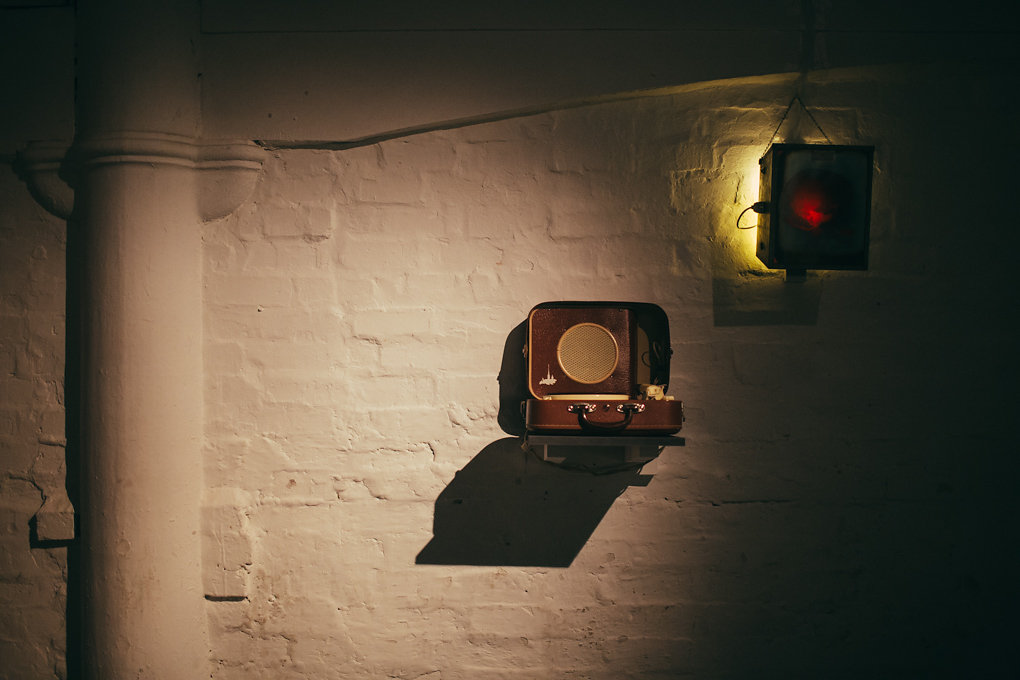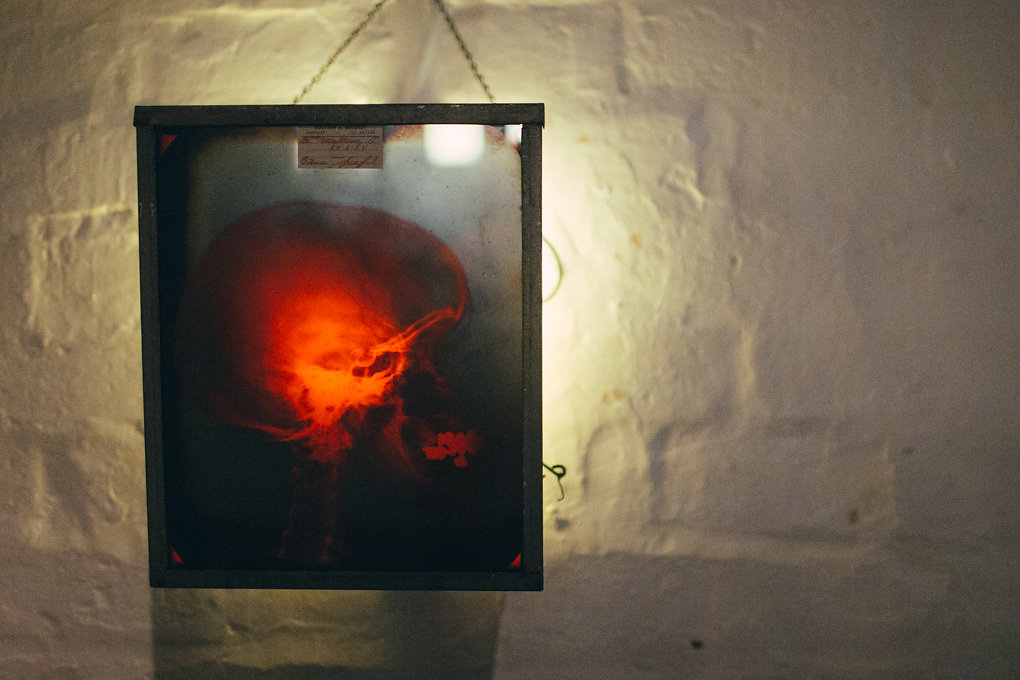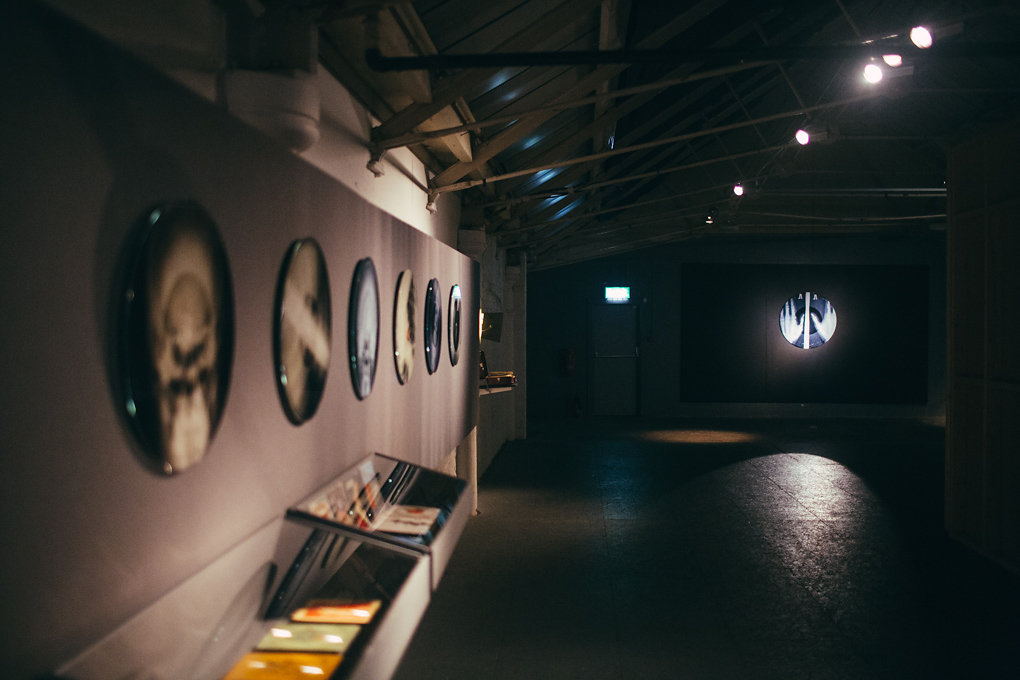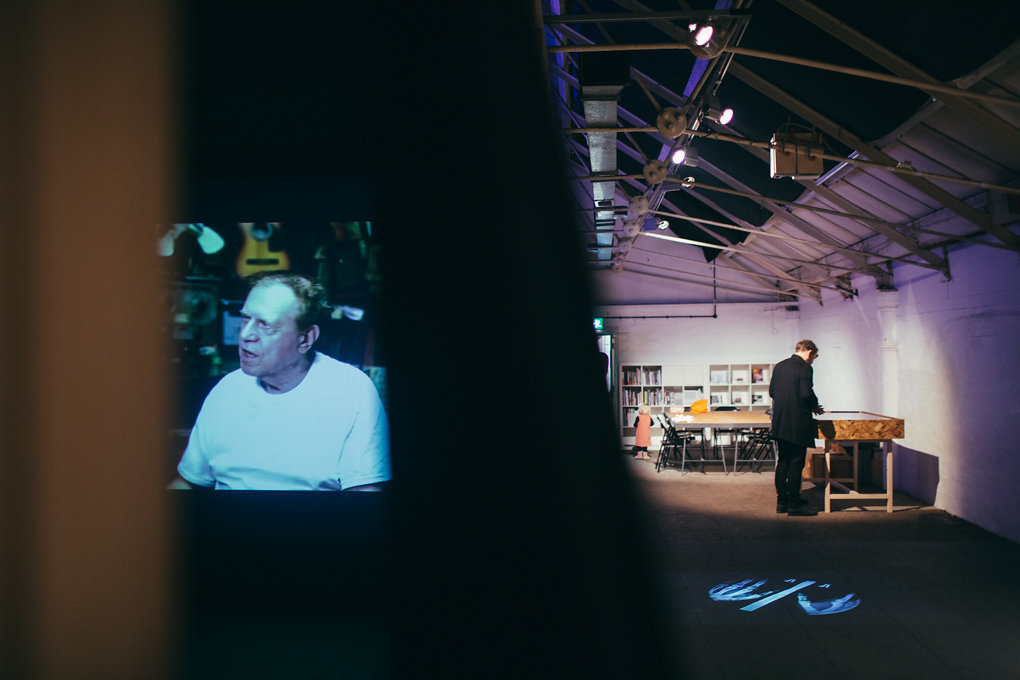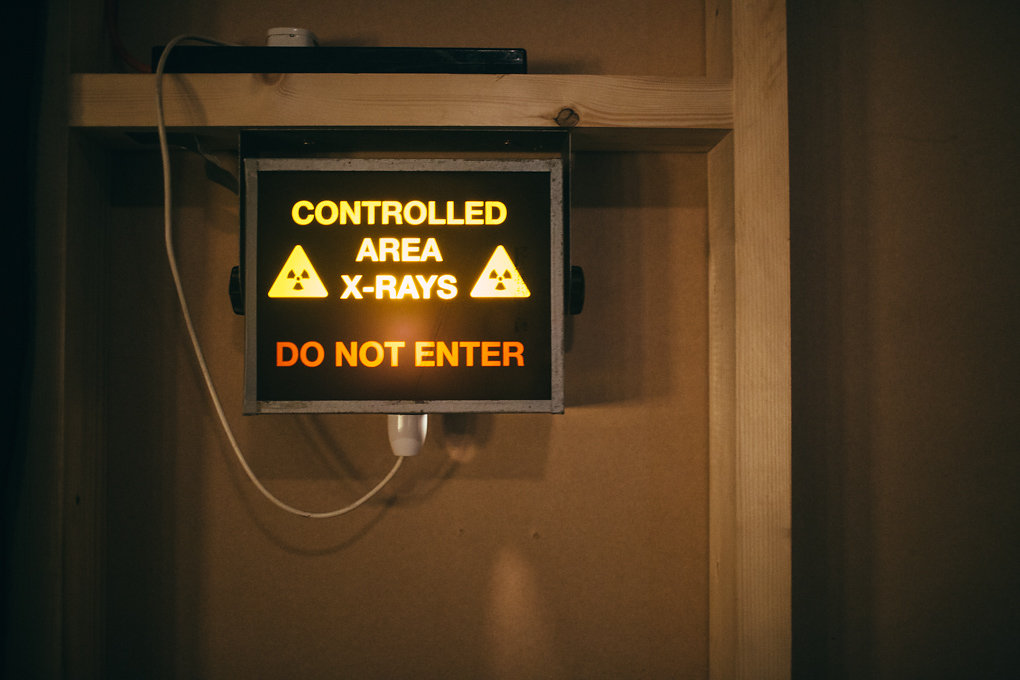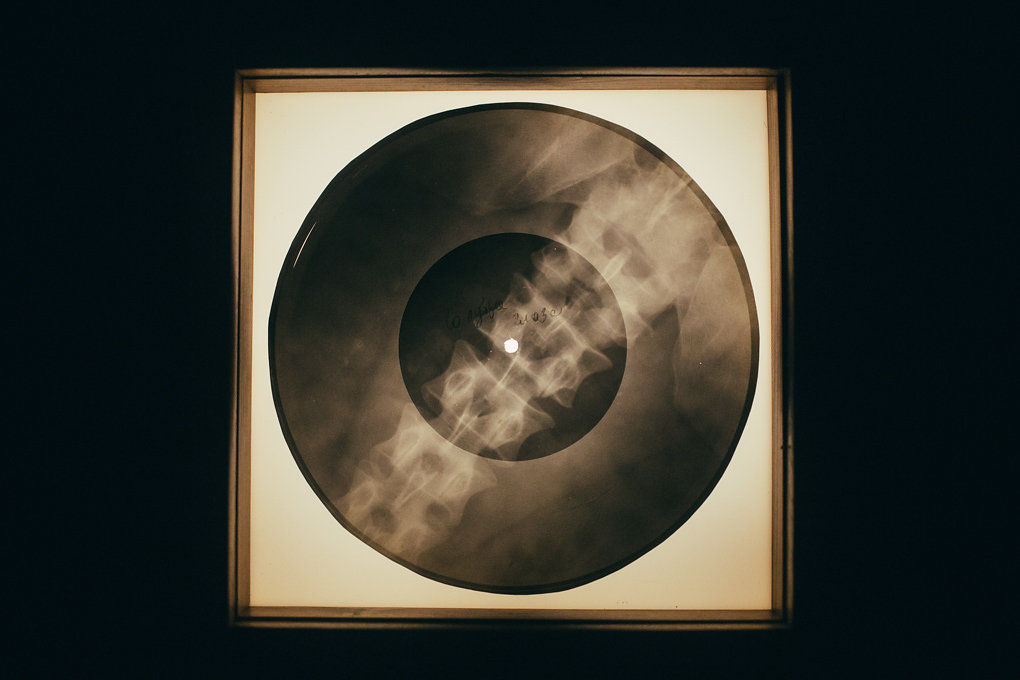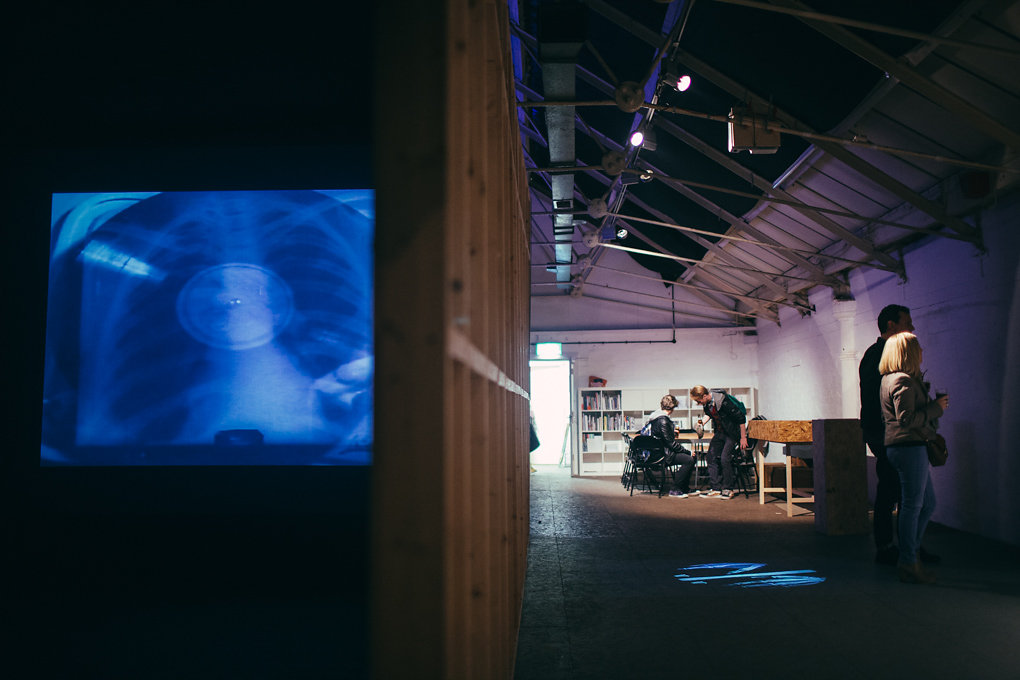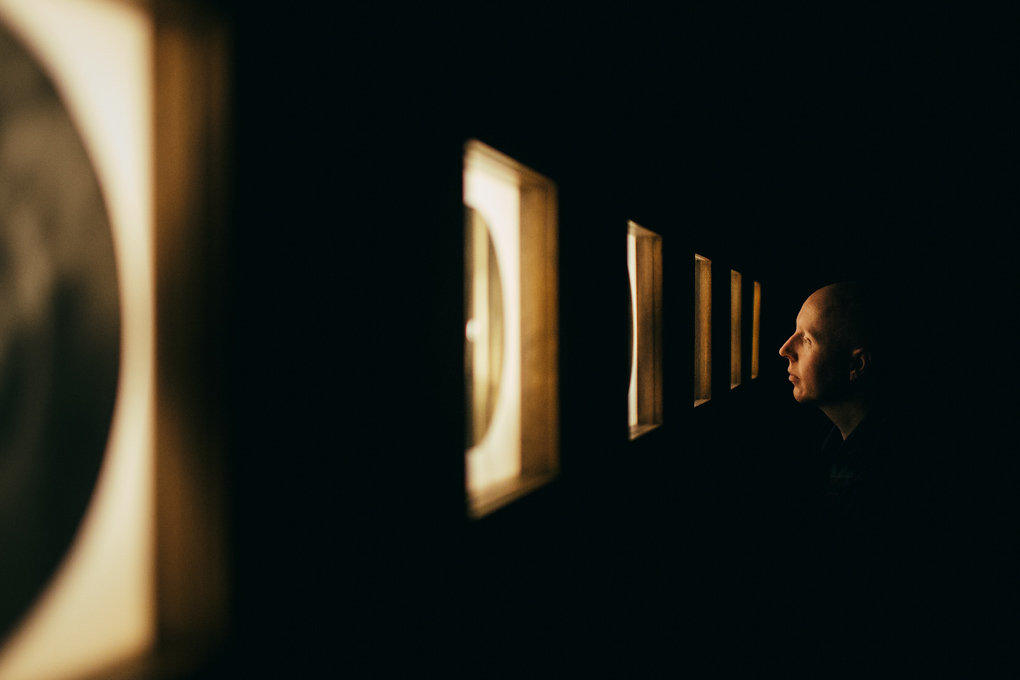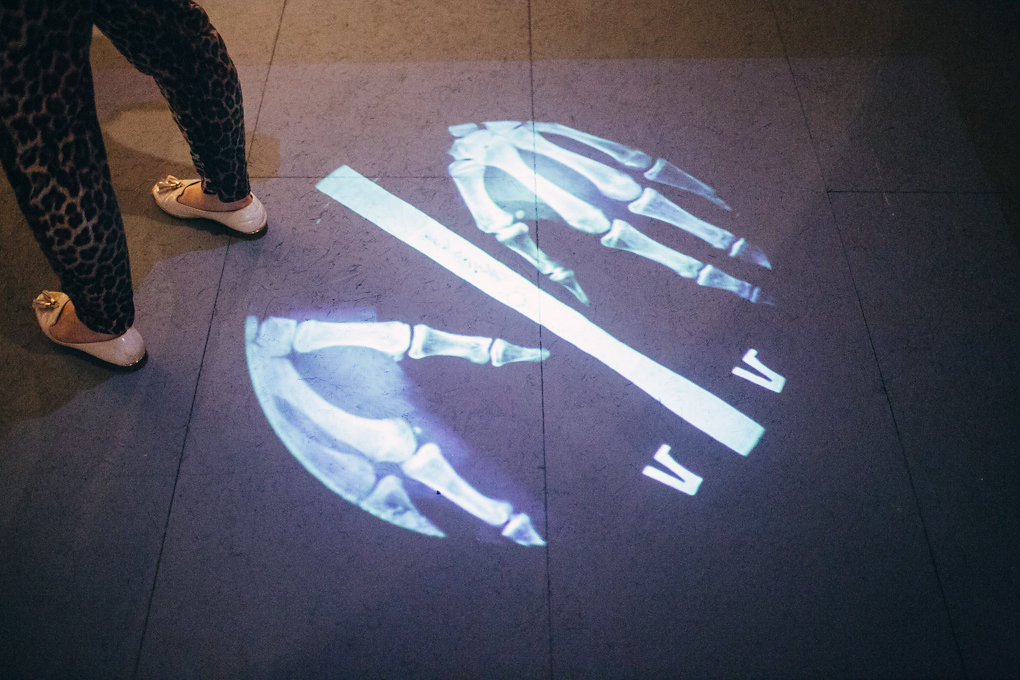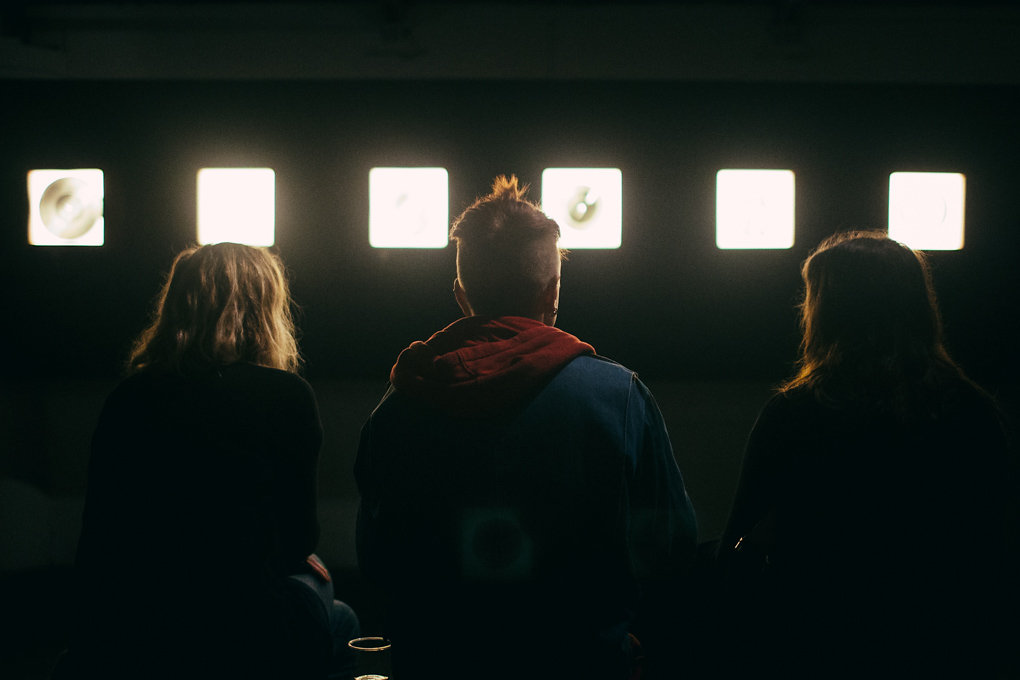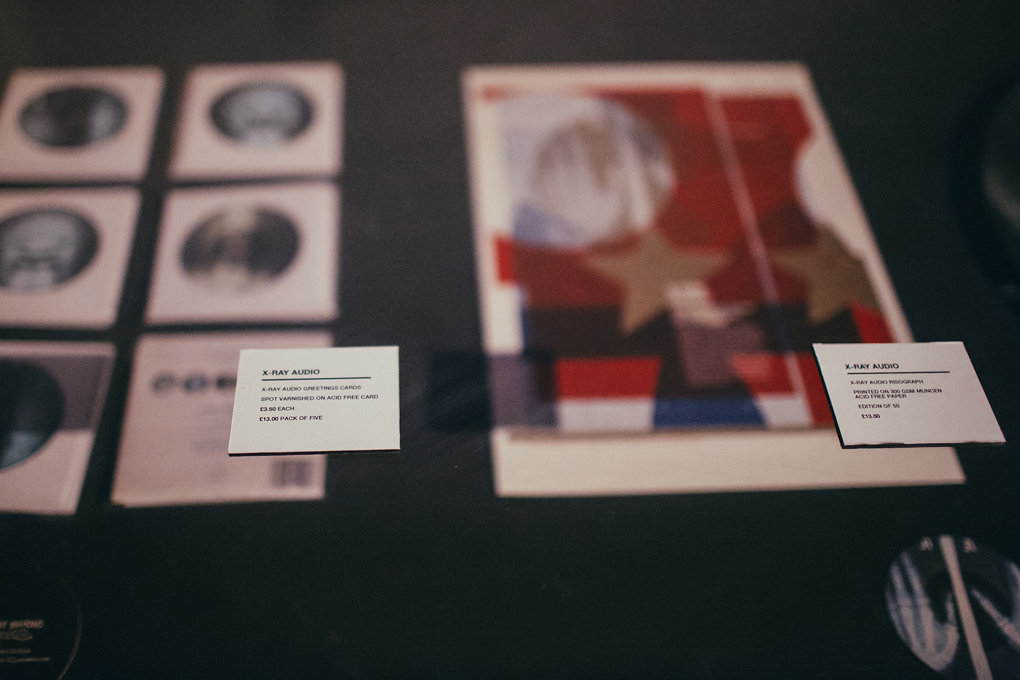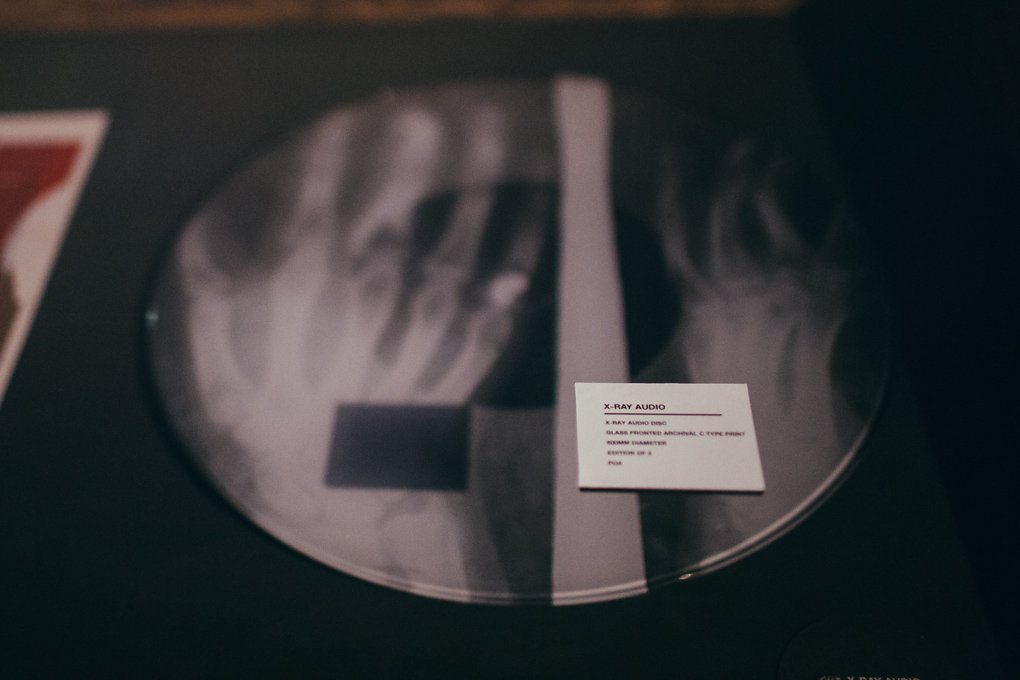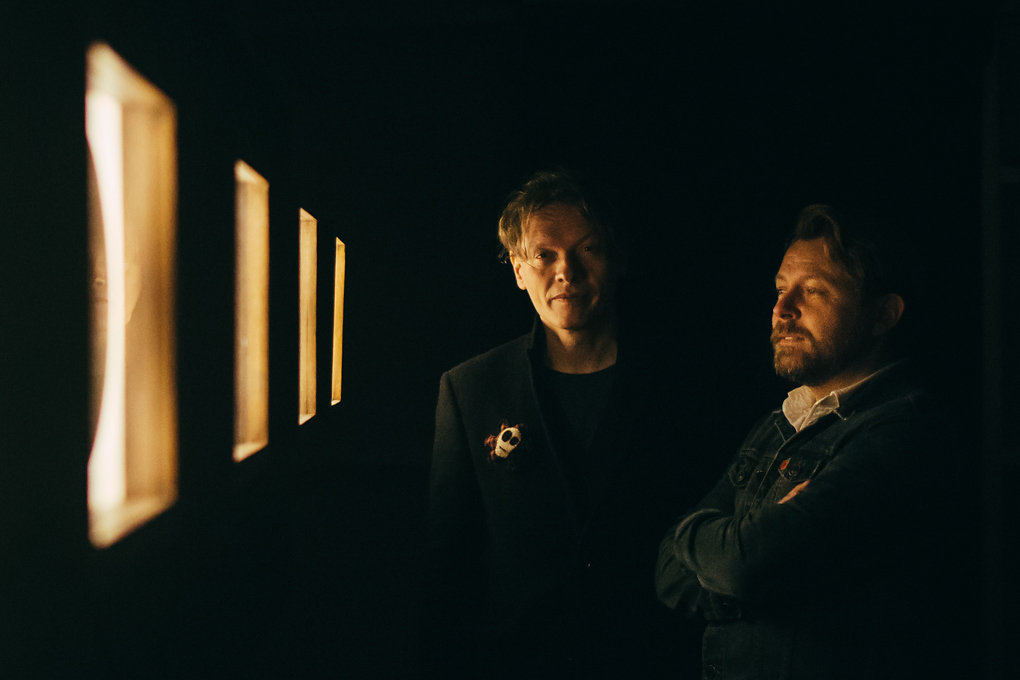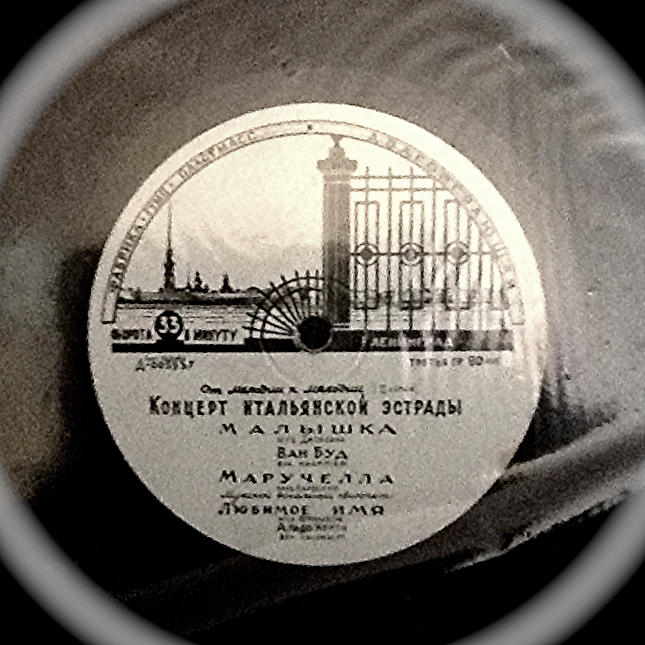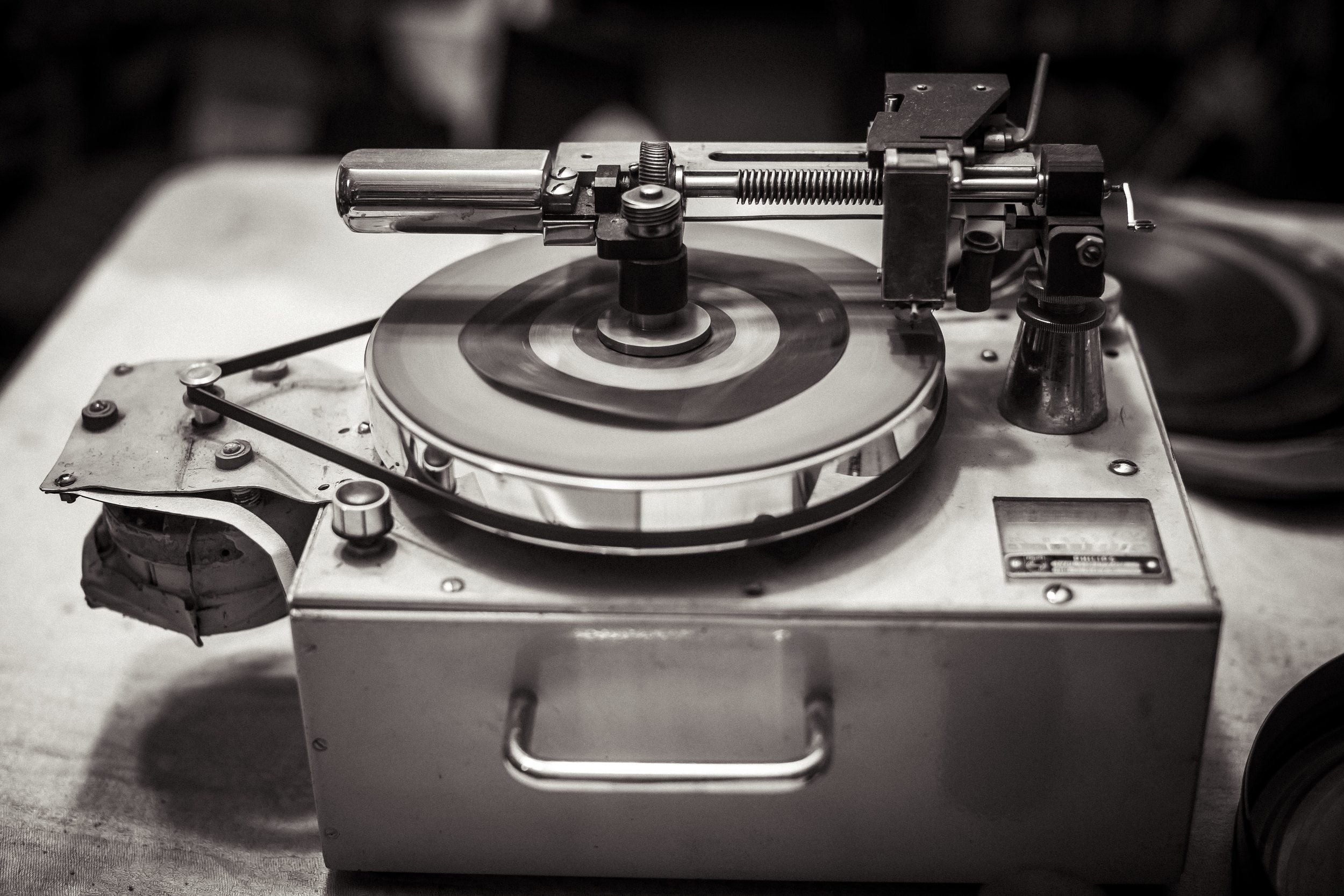Here is a beautiful bone record we found in the archive of a radio station whilst doing research. We will publishing some of the results of that research soon, It has opened up an incredible and important new dimension to the x-ray story and the origin of this technique of recording. (Thanks to the Radio Archive)
THE GOLDEN DOG GANG DISCS
These rather wonderful picture disc flexi-discs are, in fact, X-Ray records. They were produced by the most famous of the Leningrad bootleggers, The Golden Dog Gang in the 1950s. Unusually, they are recorded at 33rpm. This gives more recording time (albeit at a lower sound quality) with two or more tracks on each disc.
The technique used to make them was ingenious. The x-rays of the time had two layers, the photographic layer and a transparent protective over-layer. The Golden Dog, in their search for a more 'Western' looking high-end product, discovered a way to separate the two layers. The transparent layer was then stuck down onto a card image (containing a collage designed by the gang) and the music to be copied was inscribed with a lathe onto the composite base.
The picture discs gave a semi-official Western feel to the discs which would have seemed much cooler and more sophisticated than the standard x-ray disc of the time. Bugaslovsky, the main audio engineer of the gang, was known for the quality of his cutting, so despite the inherent lower quality of 33rpm, these discs would have been desirable objects for a small bunch of music fans with record payers that could play at this speed.
We photographed the examples shown here in the apartment of the very sweet Nina Taigin in St Petersburg. Nina, tiny and now very old, was married to Boris Taigin, a samizdat poet and one of the main members of the Golden Dog gang until his death ten years ago. She very kindly showed us Boris's archive, and gave us pasties and brandy before we headed back to London.
For more the story of The Golden Dog Gang, check out our book X-Ray Audio: The Strange Story of Soviet Music on the Bone
THE SECRET HISTORY OF SOVIET X-RAY MUSIC - on NPR
Stephen Coates was interviewed by Michel Martin on NPR's 'All Things Considered' program in a piece produced by Phil Harrell.
You can listen HERE
It features several pieces of bone music and excerpts from our interviews with original Soviet bone bootlegger Rudy Fuchs for the upcoming X-Ray Audio documentary.
Off air, Michel made the interesting comparison between the seemingly innocuous tunes that appear on many bone records and the black lifestyle magazines such as Ebony that were smuggled into apartheid era South Africa. They weren't political or particularly dissident in themselves but originated in and spoke of a world where there was much more freedom and the ability to enjoy the culture one chose to.
THE X-RAY AUDIO BOOK
Our book 'X-RAY AUDIO: THE STRANGE STORY OF SOVIET MUSIC ON THE BONE' has arrived from the printers. It looks amazing.
DJ Food kindly provided the images below - check out his blog post on the book HERE.
The book and special edition with 'bone' flexi-disc can be ordered HERE
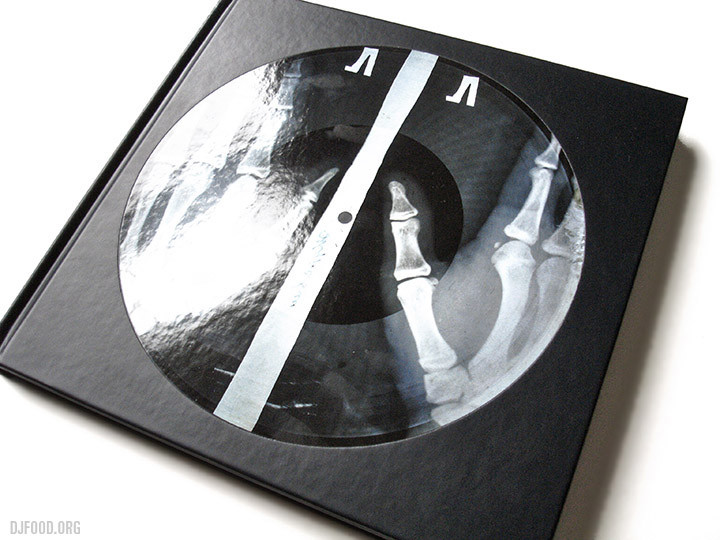

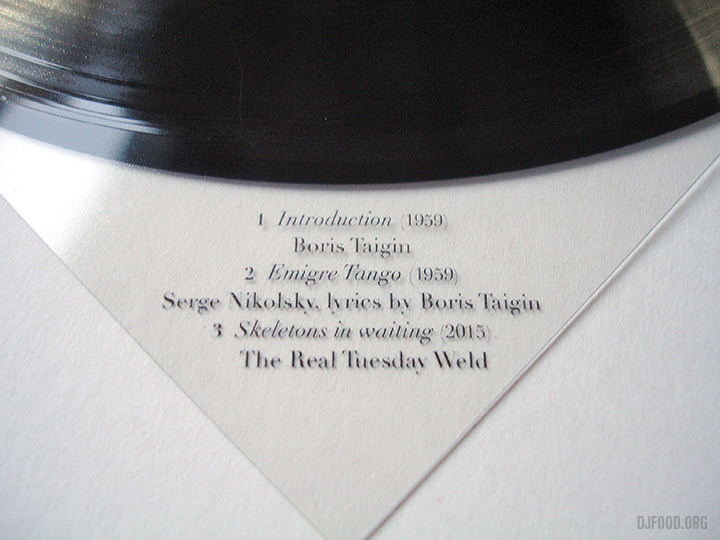

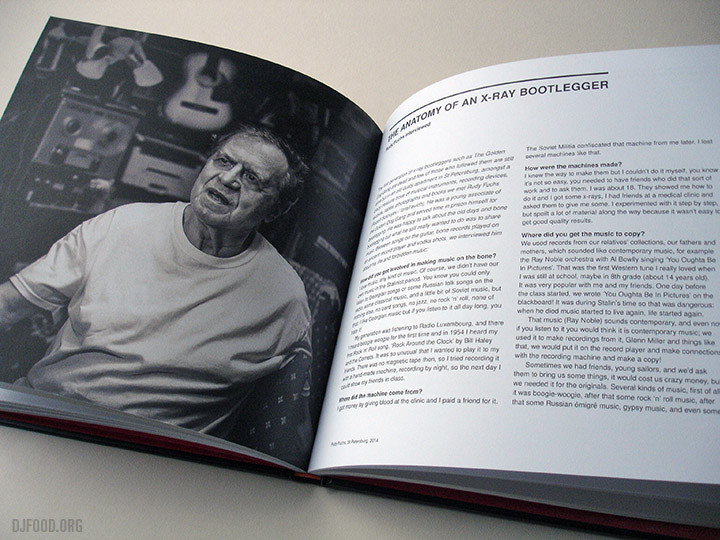
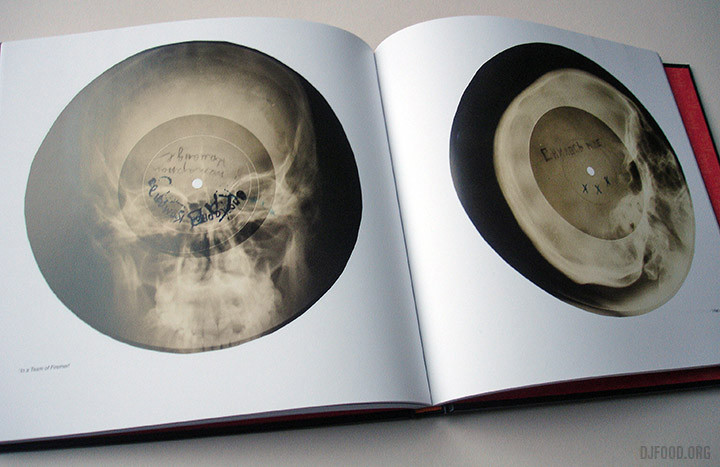
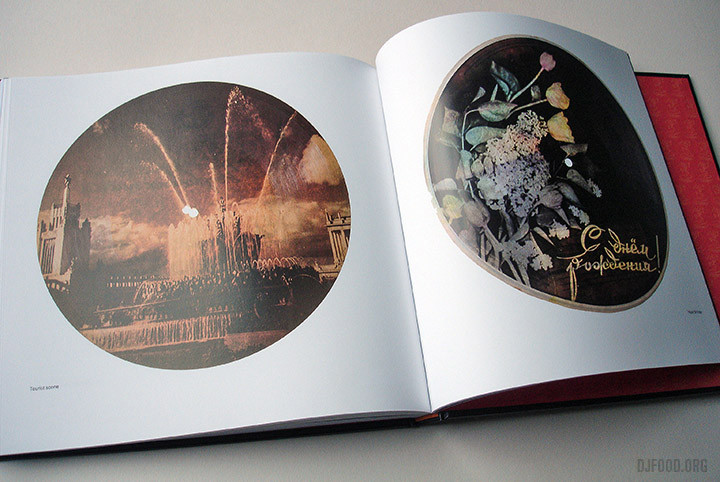

ORDER NOW to reserve one of a special Limited Edition of 500 copies with flexidisc insert containing original Soviet bootleg Bone music and a specially recorded exclusive track by The Real Tuesday Weld
In the cold war era, the Soviet recording industry and permissible musical repertoire were ruthlessly controlled by the State. But a secret and risky subculture of bootleg recordings arose. Incredibly, bootleggers built homemade recording machines and found an extraordinary way to copy banned gramophone records – they used X-Rays clandestinely obtained from hospitals
X-Ray Audio: The Strange Story of Soviet Music on the Bone tells the secret history of these ghostly records and of the people who made, bought and sold them. Lavishly illustrated with images of discs collected in Russia, it is a unique story of forbidden culture, bootleg technology and human endeavour. Contributions from Russian musical commentators and interviews, including one with the last bootlegger standing, set the scene for the intersection of ideological, technological and historical events that created this brief Samizdat musical culture.
In a time when songs can be copied in an instant and when streaming services provide virtually infinite choice and access, X-Ray Audio provides a poignant reminder of the immense cultural value of music and the extraordinary lengths people to which people will go to listen to what they love.
EDITED BY
Stephen Coates
CONTRIBUTORS:
Paul Heartfield
Maksim Kravchinsky
Sukhdev Sandhu
INTERVIEWEES:
Artyemi Troistsky, Aleks Kolkowski, Rudy Fuchs, Kolya Vasin
BIRMINGHAM BONE SHOW
The X-Ray Audio exhibtion is currently at Vivid Projects in Birmingham. We made several new pieces for the show including two new films - one an interview with bone bootlegger cut with archive material and one en ephemeral piece illustrating the process of making an x-ray record.
The show runs until 21st December - details HERE
This Friday 13th we will be hosting a live events with a very special guest - Nick and Christian from The Leisure Society - Aleks will cut a n x-ray record live from their performance.
Go HERE for details
We will be back at London's The Horse Hospital from 28th November - 21st December
In the meantime, enjoy these images from the show courtesy of GREG MILNER
THE SOUND OF BONE
We routinely talk about the sound of bones records being pretty poor. It is clear from testimony from the 1940s and 1950s that they could often sound terrible - even when new. The quality would mainly be affected by the skill of the bootlegger and the lathe they were using. As the practice spread and the opportunity to make money from bone business grew, more unscrupulous dealers got involved and the quality dropped - particularly when deals were conducted anonymously rather than between people who knew each other.
So I was very surprised recently when I met collector Victor Dubiler in Moscow and we played some of his bone records. Check out this film to see why.
The sound quality is amazing - Bill Haley and Elvis are really kicking - and that is when they are just coming out of Victor's small speaker. I don't think you could tell much difference between this bootleg and the original records. This a double sided bone too - and that is very rare - I have only come across one other before. The plastic that this is cut on may in fact not be an undeveloped X-ray at all but another type of film. Victor thought it may be the film that was used for aerial photography. We have heard about this but have not come across it before - and assumed it hadn't been used much because of the difficulty of getting hold of it or the risk of getting caught with it - or perhaps because it didn't sound very good.
The last is definitely NOT the case if this is such film - even if this is a record that has miraculously survived unplayed for all these years.
TED TALK: X-RAY AUDIO
At TED in Krakow in June 2015, Stephen presented the X-Ray Audio project, telling the story of the Soviet bootleggers, bone music and asking the question: "What would you risk to listen to music?"
An Extraordinary Phenomenon of Soviet Culture
Alexandr Akhmadeev wrote in and sent these wonderful images of three of his collection of celluloid based 40's - 60's Soviet records.
The inscriptions read: 'Sokolsky', (Konstantin Sokolsky, a forbidden artist popular on x-ray bootlegs) 'Sinyaya rapsodia' or Rhapsody in Blue, (a version of the Gershwin piece) and 'Domino' (possibly as in 'Fats Domino'). On the last record there is another inscription, which Alexandr assumes is the last name of the x-ray's patient.
He says:
'I consider X-ray records as an extraordinary phenomenon of the Soviet culture that should be saved for the next generations'
Absolutely,
Thanks so much Alexandr.
Bones and Beyond
The Soviet Bootleggers would happily use any surface that would take a groove to record on. These included x-ray films that had not been used, had been discarded or overdeveloped, plus a range of other plastic films. They also repurposed the 'Sound Cards' or 'Sound Letters' which were commercially available and officially made for novelty recording machines in tourist resorts.
Here are some more lovely examples from Victor Dubiler's collection. The Rolling Stone one looks like a Golden Dog Gang production but must have been later (check out the length of Jagger's hair). There is also deeply strange one with a child. Who knows what that was about?
The lines between legal, illegal, official, unofficial, outright bootlegs and pirate records were grey, so it is often impossible to to tell the status of particular record- even when the music on a disc is accurately represented by the titles written on the disc.
You can see more 'non bone' Bones HERE and various examples of Soundcards HERE
New Bones
Thanks to all the people who have got in touch as a result of our recent activities and press. Here are a selection of images of bones records sent by Victor Dubiler. Victor has been collecting Russian gramophone records since the 1960s - he now has over 30, 000. Yes, you read it right - 30,000..
There are some real beauties here with music by Bill Haley, Elvis and Louis Armstrong. And more to come..
Thanks to Victor
A New Bone is Born
In January during the X-Ray Audio exhibition at London's The Horse Hospital, we held two live events. Stephen told the story of the original Soviet X-Ray bootlegs and the people who made them and Aleks Kolkowski explained the process of recording audio onto a used X-Ray film.
In the second half, Stephen and Marcella Puppini of The Puppini Sisters performed the song 'Those Were the Days My Friend' (which is based on the old Russian song 'Endless Road') whilst Aleks cut their performance to an x-ray film with a 1940s lathe.
Thus, a new X-Ray record was made live and played back on a gramophone to a rather delighted crowd..
The End of the Bone Era
The period of X-Ray bootlegs ended quite abruptly. Some say within a year. Around 1963 - 4, something happened which changed everything - and it was nothing to do with the authorities or clamp downs or censorship. As has so often been the case in the music industry, it was a technological change - in this case, the reel to reel tape recorder. These became widely available and cheap enough to be owned by many people. There was no longer any need for the laborious complicated process involved in cutting music onto x-rays. And you could fit a lot more music and at much better quality on to a reel of magnetic tape.
Home recording with tape became widespread indeed it lasted right up until the 80s ushering in a period of what was called 'Magnetidzat'. Why the authorities did not see this coming is anyone's guess.
X-Ray (Audio) Film
London Film maker Michal Dzierza has made this super short about the project shot in London's The Horse Hospital inside the X-Ray Audio exhibition we held there in January
We are at work on a long form at the moment - more on that in due course.
Bone Show
On Wednesday, we held a live event inside the X-Ray Audio exhibition at The Horse Hospital. There was an amazing packed audience. It is inspiring to realise how much people respond to this story. We will be repeating it tonight (now sold out) and are preparing more dates for later in the year. In the meantime, here are some images by Paul Heartfield.
What was different, and amazing, this time was that Aleks cut a new X-Ray record direct from a live performance. Stephen and Marcella Puppini of The Puppini Sisters performed 'Those Were The Days My Friend' the song made a world-wide hit by Mary Hopkins in 1968. That song of course was a translation of the Russian romance song "Dorogoi dlinnoyu" ("Дорогой длинною"), or "By the long road" composed by Boris Fomin with words by the poet Konstantin Podrevskii. Probably the most famous version before Mary Hopkins was by Alexander Vertinsky - and it was a favourite on Bone records.
Have a listen beneath. to both
For more images from the exhibition and live events, go HERE
Blood, Bone and Bootlegs
I was talking the other day and remembered that Rudy told me how he got the money to pay for his first recording machine. Even though he had been an engineering student, he didn't have the expertise to craft the technology himself as it requires quite specific skills. He commissioned someone he knew to make one to order and raised the funds - by repeatedly donating blood to a blood bank that paid a small sum each time.
At least I think that is what he said.
If so, then that's what I call devotion.
Bones and Horses
Our exhibition at London's Horse Hospital runs until January 31st. There is a selection of original beautiful and spooky forbidden x-ray bootlegs collected in Russia over the last few years plus film, images, associated ephemera and a miscellany of strange objects. It has been getting an extraordinary response. Stephen is on BBC's Today program talking about it this week and there are upcoming features in the national and music press. Do see it if you can. It is wonderfully atmospheric in the cold war bunker atmosphere of the Horse Hospital
The live event on January 28th with Stephen and Aleks is sold out. and we have just agreed to another on Friday January 30th.
More details HERE
Sign up for updates to be the first to know about more events
Bowlly on Bone
When I first met Rudy Fuchs, the last bootlegger standing, he was understandably a little suspicious. We eventually bonded when he surprised me by playing an 1930s gramophone record by the Ray Noble orchestra and the crooner Al Bowlly. Al Bowlly is one of my favourite artists.
The interesting thing about the record was that it had a Russian label (see the image). I couldn't quite work out whether it was a record officially pressed or imported into Russia (or pirated) but Rudy had used it as the master copy from which to make various Bowlly Bones records in the 1950s.
The St Petersburg bootleggers generally got their Western records from Russian or foreign sailors in the port. Other travellers and diplomats would have brought records back too but probably for themselves rather than to sell.
Another source during the years 1931 - 1936, were the Torgsin stores for foreigners which were open to Soviet citizens too, provided they had access to hard currency, gold, or jewels. The lower image shows an advertisement for the branch in St Petersburg.
There it was possible to purchase goods such as food, clothing and even gramophone records which were unobtainable elsewhere. There were, of course, security guards at the door who would not let people in if they looked as if they hadn't got the hard currency. Locals would hang out near the shop to try to make trade with the foreigners coming out or make an order before they went in.
The Beryozka stores that opened from 1964 were similar but even less accessible to Soviet citizens - unless they were of the privileged inner party.
You can hear the Al Bowlly record (with Rudy's voice over) beneath.
A Bone Machine
Here is a little film clip made by Paul Heartfield of one of Rudy Fuch's original recording lathes used to make Bone records on X-Ray plates in the late 1950s and early 1960s.
We made it when we visited Rudy last summer in his apartment in St Petersburg. He is the last of the original St Petersburg bootleggers.
Brubeck on Bone
"No dictatorship can tolerate jazz - it just seems to represent freedom"
Dave Brubeck
Brubeck became the first American jazz musician to perform behind the Iron Curtain when he toured Poland in 1958. Jazz had been popular and tolerated in both Poland and Russia at various times before the war but it was despised by Stalin, a prejudice enforced by the Polish communist government too. So after the war, Jazz could only be played in private houses during what became known as the “catacomb period” (another bone reference ironically).
By 1958, with Stalin dead five years, the climate had changed - Poland in particular opened up to Western musical influences and was developing its own respected Jazz scene.
Music on the (skull) bones, Rilke and Primal Sound
"The coronal suture of the skull .. has–let us assume–a certain similarity to the closely wavy line which the needle of a phonograph engraves on the receiving, rotating cylinder of the apparatus"
In 1919, relatively early in the development of recorded sound, the Austrian - Bohemian poet Rainer Maria Rilke (1875 - 1926) wrote an extraordinary essay describing a fantasy of playing the coronal suture of a human skull with a gramophone needle as if it were the groove on a wax cylinder.* Rilke speculated on the ‘primal sound’ that such playing could reveal and the unimaginable music of the feelings that are naturally inscribed on the surface of the skull.**
In some elliptical way, this evokes certain symbolic feelings associated with the 'Bones' bootlegs. Although the images of the X-Rays on the discs was almost certainly not as important to their owners as the music they contained, the poetical resonance of images of the interiors of Soviet citizens and the inscribed grooves of music they privately loved is virtually unavoidable - at least for us.
Rainer Maria Rilke
* For the full text of Rainer's Primal Sound piece, go HERE.

